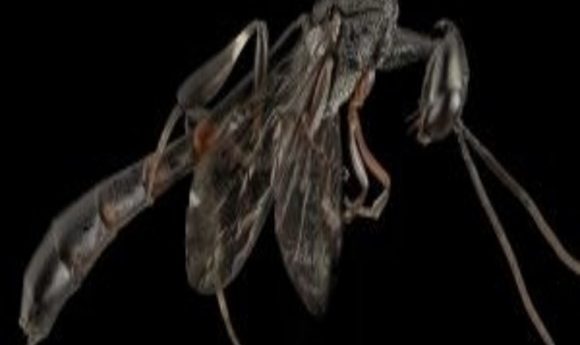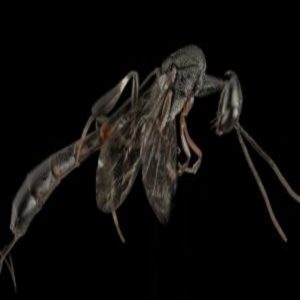How wasp venom upgrades its sting

Researchers have just learned how parasitoid wasps rapidly develop new venoms via an often overlooked evolutionary mode of acquiring new genes.

Parasitoid wasps use venom to alter the metabolism, immunity, and behavior of their insect hosts, creating a suitable environment for feeding wasp larvae. Because these wasps show large shifts in their host preferences, their venom repertoires are under pressure to quickly evolve and adopt novel functions. In a new study in Current Biology, researchers used the rapid turnover of venom genes in parasitoid wasps to study how new gene functions evolve. In contrast to the classic gene duplication model, they found that wasps commonly acquire new venom genes by co-opting single-copy genes from non-venom progenitors.
The authors examined the mechanisms of evolution in the highly specialized venom gland of four closely related parasitoid wasp species to investigate how this rapidly adapting gland acquires novel venom functions. To determine the venom composition of these four species, they generated proteomes from the venom reservoir, which stores venom prior to injection into the host, and assembled de novo transcriptomes from the venom gland and reservoir.
The researchers found extensive and rapid turnover in venom genes, with both gains and losses in each species. For example, more than 40% of the venom repertoire changed between the 2 closest species examined. Moreover, many parasitoid wasp venom genes did not fit the classic model for the evolution of novel gene function. According to the classic model, the relatively slow process of gene duplication is followed by the evolution of a new function by one of the copies in a process known as neofunctionalization. But genome screens and phylogenetic analyses revealed that nearly half of the 53 recently gained venom genes the authors identified were single-copy genes in their genomes and showed no evidence of ever having been duplicated.
Surprisingly, the loss of venom genes was primarily due to downregulation of expression in the gland rather than gene death through coding sequence degradation. While the majority of venom genes have specialized expression in the venom gland, recent losses of venom function occurred primarily among genes that showed broader expression in development, suggesting that they could more readily switch functional roles. According to the authors, expression specialization by co-opting existing genes could allow for much faster adaptation to novel or changing environments.
“The findings could have broad implications for how new gene functions evolve outside of wasp venom, as co-option of single-copy genes may be a common but relatively understudied mechanism for the evolution of new gene functions, particularly in tissues or organisms subject to rapid evolutionary change,” said first co-author Ellen Martinson from the University of Rochester. “Understanding how organisms can gain new functions from already existing genes could be important for understanding how organisms adapt to rapidly changing environments, which might be particularly important in a world that is rapidly changing due to climate change.”
The findings may also one day have clinical implications for humans. “Because parasitoid venoms change so quickly, and because there are so many species of these insects, and because their venoms alter metabolism and physiology, they can be a huge potential source for new drug discovery,” said senior study author John (Jack) Werren of the University of Rochester. “But that is all in the future.”